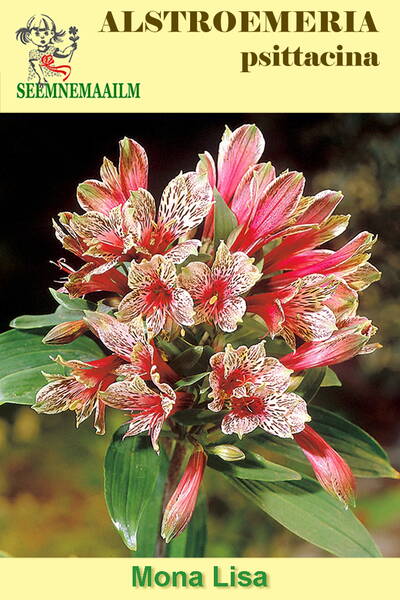Perennial from the family: Alstroemeriaceae.
Origin: South America.
Special characteristics: The type that grows from seeds. The flowers are larger than the species, more numerous, and the red color is brighter. Alstroemeria is ideal for cutting.
Flower color: dark red with greenish inner segments with reddish-brown lines.
Height of flowering plant: 90 cm.
Natural flowering period: July - October
Distance between plants: 45 cm.
Hardiness zones: Z7 - Z10.
Soil requirements: acidic, rich in humus, fertile.
1.0 g = 110 seeds.
The bushes look very impressive among low plants.
Sowing: for successful growth and abundant flowering, alstroemeria should be planted in a brightly lit place, but not in direct sunlight, in well-drained, loose, nutritious soil.
Sow in April-May in deciduous-turf soil (mixture 2:1). Shoots appear after 3 weeks. Seedlings bloom in the second year.
Care: responds to mineral and organic fertilizers. After the first frost, cut off the entire above-ground part and allow the top layer of soil to dry out as much as possible, then cover the bush with a thick layer of dry leaves, and then with a film on top.
History of the Alstroemeria psittacina flower: Arne Jensen, a Danish nurseryman, received the plant from the royal gardener, who eventually shared the plant with Claus Jelitto.
Realizing that the plant was growing from seed, Claus decided it deserved a cultivar name. Thus, it became known as the "Mona Lisa", after Jensen's wife, Mona Lisa, who was not the subject of Leonardo da Vinci's painting!
The flower was enjoyed for decades by the king and later the queen of Denmark.
Eng.: Peruvian Lilly, Inca lily, Parrot Lily, New Zealand Christmas bell. Bot. syn.: Alstroemeria pulchella.












